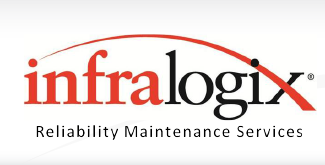With organizations becoming increasingly dependent on sophisticated large-scale electronics and systems to keep their facilities running smoothly, the delivery of consistent, reliable electricity has never been more critical to the performance and success of modern businesses. Still, many organizations continue to struggle with the basics of measuring and maintaining Power Quality. So, to help your organization perform at it’s very best, here is a helpful rundown of what Power Quality is, why it’s so important, and what you can do to stay on top of it:
What is Power Quality?
Quite simply, Power Quality is the difference between the expected and actual performance of a facility’s electrical power.
Types of Power Quality Problems
There is a wide range of issues that can contribute to potential gaps and anomalies in the quality of power at any given plant or facility. Here are a few examples of some of the most common Power Quality issues and their causes:
- Power Sag – Dips in voltage often resulting from faults in the transmission or distribution network, faulty installation, or connection overloads.
- Power Failure – Complete interruptions of power for more than a few seconds, usually resulting from equipment failure, human error, storms/downed power lines, and other natural disasters such as fires or floods.
- Power Surge – A spike in voltage due to thunderstorms/static electricity, or disconnection of heavy loads.
- Harmonic Distortion – Non-sinusoidal current pulses, often caused by nonlinear loads
- Voltage Fluctuation – Variance in voltage value often caused by frequent starts and stops of electric motors.
- Electrical Line Noise – High frequency signals on the waveform, usually caused by Hertzian waves, and/or radiation from electronic machines, or improper grounding.
Effects of Power Quality Issues
The problems listed above can cause a variety of swells, spikes, surges, outages and other disturbances. And although these problems might only last for a few milliseconds at a time, they can lead to some potentially severe consequences. These issues can cause computer systems and other sensitive equipment to malfunction, or shut down completely. And when you consider the potential costs of downtime to high-performance, or high-output facilities such as manufacturing plants, banks, and data centers, these Power Quality issues can end up costing thousands of dollars a minute
How to Improve Power Quality
All too often the tendency is to wait until something goes wrong before taking action to fix it. But when it comes to critical systems in high-performing facilities, this can lead to unfavorable results. The keys to avoiding the pitfalls of Power Quality disruptions are identification and prevention. This involves engaging a reliability specialist to help assess and find the cause of the problem. In some cases, utility power can be at fault, and in others, equipment or system issues can be causing the problem. Using specialized power analysis equipment, a reliability specialist will help identify gaps and anomalies in your systems and equipment and create a detailed strategy for taking corrective measures against costly failures and shutdowns.


